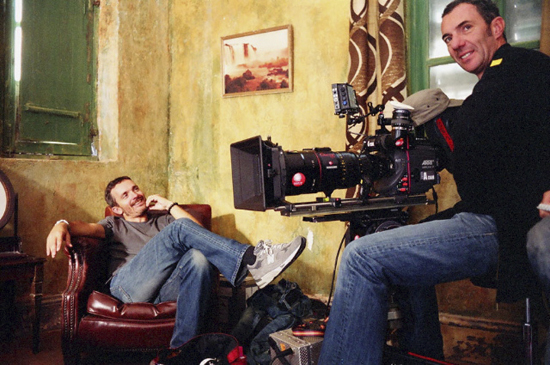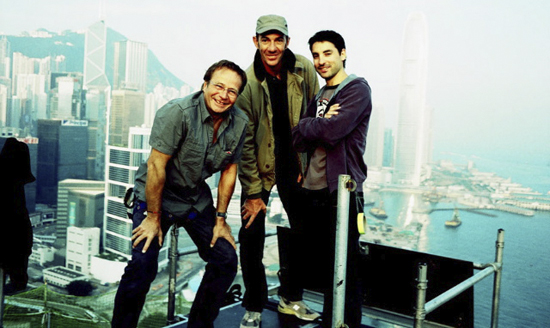Largo Winch

After weeks of tests with many actors, Jerome Salle decided on Tomer Sisley as the hero, going against the general opinion, and facing the fury of the comic book’s afficionados. But his determination to stay with Tomer, who speaks five languages fluently and does his own stunts, proved a wise choice. After the first five minutes of the movie, the issue of physical likeness to the comic book Largo disappears, and Tomer becomes the hero of this fast-paced adventure film. In passing, I must pay tribute to him for going from 1st to 2d unit for the 82 days of production without taking a day off.
Of course, the comparison with American cinema is inevitable for this kind of film, so we tried to optimize our resources to maximize the effectiveness of our production.
The first unit had two cameras, including a permanent Steadicam, and a MT400 crane linked to a Mo-sys head which gave us greater freedom in the shot break-down.
The 2d unit was brilliantly directed by Roberto De Angelis and worked for 33 days with 2 cameras, relieving us of many shots, especially in action scenes. What initially seemed like a big production proved essential and very effective to arrive at this type of movie.
As usual, I thank Danys Bruyere and Laurent Kleindienst from the TSF Group for their cooperation and considered advice throughout the production.
My usual crew followed me from Malta to Hong Kong (Marie-Laure Prost, Bruno Durand, Olivier Mandrel as department heads). Didier Lefouest at the controls of Lustre at Duboi timed the film with considerable talent.
We went to Mac Guff for special effects, with Rodolphe and his imagination.

I thank Jerome Salle for trusting me again and for directing this production with a maturity that is rare on a second film out. Finally I regret that, despite an approach from Kodak and a big effort on their part to ensure that the film be printed on 5293, nothing came of it. It would appear that there was a blockage, for obscure reasons, from the LTC laboratory, to the detriment of the artistic choices desired by the director and myself. I had to settle for high contrast Fuji that came closest to my reference print on Kodak 93.
I still salute the excellent photo-chemical work done by Jimmy.
 En
En Fr
Fr




